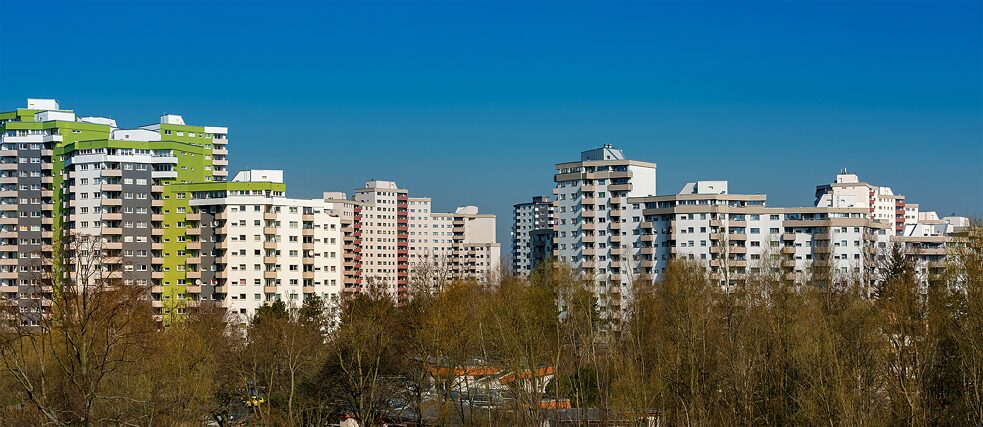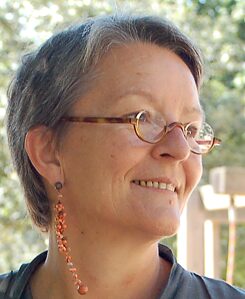Worlds of Homelessness
“Social Balance Is the Key”

In all German cities, it takes money to live anywhere close to downtown, quite a lot of money in fact. Those who cannot afford the rising rents in cities are pushed out to the periphery. We asked an expert how urban planning could address this widening gap between rich and poor.
By Eleonore von Bothmer
In the summer of 2019, tens of thousands of Berliners took to the streets to protest skyrocketing rents. Housing costs in the German capital have almost doubled in the past ten years, a steeper increase than in any other German city in the same time period. Long-established residents are being forced to leave their homes and neighbourhoods because they can no longer afford to live there. The situation is not much better in many other German cities either. Sociologist Ingrid Breckner works at HafenCity Universität Hamburg on inclusion in cities. In an interview, she explains the great conflict potential of exclusion and segregation and how to prevent increasing housing inequality.
Ms Breckner, what is the first thing that comes to mind when you hear the words “social exclusion”?
Our current housing market, which is extremely strained. Lots of people are already being displaced to the outskirts of urban areas because they can no longer afford to live in the city. They are being forced to leave their neighbourhoods, familiar surroundings and circle of friends. This is more difficult for older people compared to say students, since there is little they can do to change their situation very much.
Where are they all going? Living space in the countryside is not necessarily that much cheaper than in the cities.
That’s true. While there are still some areas that are desperately looking for tenants, there is often a lack of infrastructure and no doctors or shops nearby.
The housing shortage is not just about money. In Munich, for example, even a family able to pay 2,000 to 3,000 euros in rent is finding it hard to find a place to live.
Yes, and that’s what makes it so dangerous. It is all happening right at the core of our society, so it is social dynamite. In Berlin, for example, the recently passed temporary cap on rents is very controversial.
What can we do to counteract this type of exclusion in our cities?
One thing we can do it provide social housing. Just outside Hamburg, the city of Norderstedt has passed a provision requiring 50 percent of all new buildings to be built as affordable, public housing. Capping rents provides security to those who are at risk of being excluded, at least for the next 15 to 20 years.
Social housing has been around for decades though; it’s not a new idea.
In the last 20 to 30 years, affordable, public housing has really been neglected. Fixed rents for social housing only apply for a limited period of time, so the number of lower-income flats drops as these agreements expire if we don’t built new public housing to make up for the losses. In Hamburg, 40 percent of all housing was social housing in the 1970s. That figure has dropped to just 12 percent, and will continue to fall as more fixed rental agreements expire. It is going to be really tough to catch up.
Can you point to any good solutions to the current housing situation?
Vienna has become the Mecca of inclusive living. The Viennese have been building municipal flats for hundreds of years, and until 2019, there was no expiration date on the fixed rents in social housing. The city maintains this public housing portfolio and is even expanding it further.
 Ingrid Breckner is Professor of Urban and Regional Sociology at HafenCity Universität Hamburg. She researches on social cities, flight and migration, and strategies for integrated urban development. In an interview with goethe.de, she talked about social housing as an example of social inclusion and exclusion.
| Photo: © private
Are there any examples of forward-looking approaches in Germany?
Ingrid Breckner is Professor of Urban and Regional Sociology at HafenCity Universität Hamburg. She researches on social cities, flight and migration, and strategies for integrated urban development. In an interview with goethe.de, she talked about social housing as an example of social inclusion and exclusion.
| Photo: © private
Are there any examples of forward-looking approaches in Germany?
Yes. Currently a segment of all Hamburg’s new quarters are earmarked for joint building ventures, i.e. for groups of private builders. They are not investing in construction to generate returns, but because they want live there. These are often very committed groups. There are even building communities that consciously seek to integrate Harz IV welfare recipients. Overall there is also a trend towards awarding land to the bidder with the best concept and not just the highest price. So builders who integrate kindergartens and doctors' surgeries into their proposals have better cards. Competition is less about who can pay the most, but who can offer the most. This in no way means that the overall situation is particularly rosy, though.
Does the “social city” model still have a role to play? After all, it is designed to not only make living space more affordable, but to also create new spaces.
Yes, it’s been around for over 20 years. At the federal level, funds are allocated to the federal states to repair areas that are structurally run-down. Many municipalities are so heavily indebted that they could not do this on their own; they need this support from the federal government.
What is the worst-case scenario if the situation does not improve?
The current unrest in Santiago de Chile is an excellent example of what could happen. It started when poorer segments of the population were resettled into social housing on the outskirts of the city or even outside the city proper, so it took them hours to get to work by public transport. Then the price of subway tickets went up and it all kicked off. We are balanced on a knife edge here in Germany too.
What could be done to defuse the overall situation?
Social balance is the key. The more divided a society is, the more exclusion takes place, which can lead to violent conflicts. It is crucial to reflect on every policy area and ask how this or that measure affects the structure of our society.